人教版新目标初中英语八年级上册How do you make a banana milk shake教案2篇
-
- 页数:28页
- 字数:约 34688 字
- 大小:475.00KB
- 格式:.doc
- 版本:Office2016及以上版本
- 作者:Betty设计
How do you make a banana milkshake教案2篇
How do you make a banana milk shake?教案一
I.Teaching objectives 单元教学目标

Skill Focus
听
Listen to the process and the ingredients of making something
说
Describe the process of making something
Talk about the culture of eating home and abroad
读
Read a passage about recipe
写
Write about the process and ingredients of making something
Write instructions about how to eat Beijing Duck
功
能
句
式
Describe a process and follow instructions
How do you make a banana milk shake?
First, peel the bananas and cut them up.
Then pour the milk into the blender ...
Next ...
Finally ...
Language
Focus
词
汇
1. 重点词汇
cut, up, peel, pour,into, instruction, top, check,ice cream, salt, sandwich, bread, butter, duck
2. 认读词汇
shake, milk shake, yogurt, watermelon, popcorn, popper, relish, lettuce, turkey, slice, green onion, sauce, pancake, blender, ingredient, amount, teaspoon, super, recipe, mix, boil, add, roll
3. 短语
turn on, cut up, put/pour ... into ..., mix up, add ... to ...
语
法
1. Imperatives (祈使句)
Peel the bananas and cut them up.
Pour the milk into the blender.
2. Countable/Uncountable nouns
How many bananas do we need? There.
How much yogurt do we need? Two cups.
Strategy
Focus
Guessing
Sequencing
Task based learning
II.Teaching materials analyzing and rearranging 教材分析和教材重组
1.教材分析
本单元的中心话题是Cooking at home,主要围绕How do you make a banana milk shake?这一主题展开各种教学活动。并以这一主题引出可数名词和不可数名词,how many/how much 问句及祈使句等语言功能。本单元旨在让学生学会描述制作某个东西的过程和步骤,进而分析中西方在饮食文化方面的不同,通过听、说、读、写来培养学生综合运用这些知识的能力。最终让学生能在“做中学”(learning by doing),通过有限的课堂实践活动,能准确地用英语来表达。
SectionA 1a介绍本单元的重点词汇:一些用以描述香蕉饮料的制作过程的动词,并让学生根据图片选择正确的动词完成图中句子,由此引入本单元的主题;1b让学生听一段对话录音,根据听到的顺序给句子排序,帮助学生从听力材料中了解、获取目标语言;1c是一个口头会话练习(结对子活动),指导学生如何用目标语言进行对话(描述香蕉饮料的制作过程);2a和2b是两个听力活动,通过听力训练帮助学生进一步了解目标语言的用法,落实听与写的技能目标;2c是结对子口语会话活动,从描述如何制作香蕉饮料扩展到如何制作水果色拉,以巩固目标语言,是对学生的一种语言输出练习;3a要求学生阅读对话,并用所给的词完成对话,掌握几个表顺序的副词的用法;3b要求学生根据3a中的对话示范,看图向同伴描述爆米花的制作过程,帮助学生进一步用目标语言进行口头表达;4 是一个写食谱、拼食谱的游戏活动,给学生提供了一个学以致用的机会,是学生运用目标语言进行听、说、读、写的综合训练。
SectionB 1a让学生写出自己喜欢的三明治配料并与其他学生比较,学习一些表食品的词汇,为后面的课堂活动作铺垫;1b是在1a基础上的口头训练,仿照对话与同伴谈论喜欢的三明治配料;2a和2b是两个听力练习,其中2b也有写的训练;2c又是一个结对子口头会话练习,要求学生描述自己最喜欢的三明治的制作过程,是对目标语言的巩固与扩展; 3a、3b和3c为读、写训练,通过一系列活动了解中西方饮食文化的差异,其中3a是一篇关于Recipe的阅读材料,要求学生根据材料内容写出“Super Chicken Sandwich”的配料并进行分类完成表格,是一项巩固词汇的读写训练;3b是在3a的基础上的读与写的训练,完成 A recipe for Sandwich的阅读语言材料;3c用目标语言进行写作的训练,落实与巩固写的技能;4是一项口语训练活动,体现了英语语言“在做中学,在学中用”的特点,本单元的综合语言知识能力的运用在此体现出来。
Selfcheck 1 检验学生对几个重要动词和动词短语的掌握情况,形式为填空和造句;2 要求学生根据所给图片和提示语写一段吃北京烤鸭的步骤和过程,是对学生语言应用能力的综合检验。
2.教材重组和课时分配
Period1(Section A: 2a, 2b, Section B: 1a,1b)
Function,Listening and Speaking
Period2(Section A: 1a, 1b, 1c, 2c, 3a, 3b, 4)
Functionand Integrating skills
Period3(Section B: 2a, 2b, 2c, 3a, 3b, 3c)
Integratingskills and Culture
Period4(Self check and some exercises)
Grammarand Practice
III.Teaching plans for each period
How do you make abanana milk shake?教案二
Period 1 Function, Listening andSpeaking
Targetlanguage 目标语言
1.Words and phrases生词和短语
shake,watermelon, yogurt, teaspoon, blender, salt, popcorn, popper, sandwich, butter,relish, sauce, turkey, slice, green onion, duck, pancake, ingredient,instruction, amount
2.Key sentences重点句子
Howmany bananas do we need?
Howmuch milk do we need?
Abilitygoals 能力目标
Getstudents to know the names of food and drink, the plural forms of countablenouns, and uncountable nouns.
Learningability goals 学能目标
Helpstudents learn how to eat healthy.
Teachingimportant and difficult points 教学重难点
Theuse of countable nouns and uncountable nouns.
Teachingaids 教具准备
CAIor lantern slides, pictures, tape recording.
Teachingprocedures and ways 教学过程与方式
Step I Warming up
T:Good morning, boys and girls! Do you like English songs? Let’s relax ourselvesand enjoy an English song: “One hamburger, two hamburgers ...”(CAI呈现)
T:What’s the song about?
Ss:Food and drink.
T:Yeah, great! In this unit we’ll talk about how to make delicious food anddrink. (Write “How to make things” on the blackboard.) Today we willlearn the names of food and drink first.
Step II Guessing game and Presentation
T:Now please tell me what kind of food/drink/fruit you like.
S1:I like noodle.
S2:I like bananas.
S3:...
Inthis way, help students to review the words about food they have learned. Thenteach the following new words by using pictures or slides.
shake, watermelon, yogurt, teaspoon, blender, salt, popcorn, popper, sandwich, butter, relish, sauce, turkey, slice, green onion, duck, pancake
Sample pictures:
StepIII Make chants
T:I have a good way to remember the words well. Now look at the slide and chantafter me.
Showthe following on the slide.
What do you like?What do you like?
I like onions.I like.
What does she like? What does she like?
She likes yogurt.She likes.
T:OK. Now make your own chants by changing the words underlined with the newwords that we have learned.
Studentsmake chants with each other, then ask individual students to present theirchants to the class and see who does it best.
Thenchoose the best chant maker and the best chanter.
Step IV Countable nouns and uncountablenouns
Showthe following words on the screen.
shake, watermelon, yogurt, teaspoon, blender, salt, popcorn, popper, sandwich, butter, relish, sauce, turkey, slice, green onion, duck, pancake, apple, ice cream, noodle, broccoli
1.Put the words into the correct places
Countable nouns
Uncountable nouns
T:Now please look at the words carefully. Then tell us which words can be countedand which words can not be counted. Put them in the right places in groups offour.
Afterthat have the students make a conclusion on the rules of plural forms ofcountable nouns and uncountable nouns. Finally sum up about the rules that:
Countableitems are things you can count like one apple, two apples, three bananas;Uncountable items are things you can’t count like milk or yogurt. So you shouldsay some milk/yogurt or two cups of milk/yogurt.
2.Pairwork
Aska student to act as partner, and present the following dialogue as a model.Then let students make more similar dialogues with the words above.
Model:
T:How many bananas do we need?
S:Three bananas.
T:How much relish do we need?
S:Two teaspoons.
Step V Listening (Section A: 2a, 2b)
Inthis step students will do some listening, speaking and writing practice usingthe target language.
T:Maria and Katie are making a fruit salad. Listen carefully to what they’re talkingabout.
Playthe recording for the first time. Students only listen.
T:They mentioned some names of foods, right? We call them ingredients. Look atthe chart in 2a on page 42. (Call attention to the headings “How much” and “Howmany”) Write the ingredients you can count under the heading “how many” andwrite those you can’t count under the heading “how much”.
Playthe recording again, students listen and write the names of the ingredients inthe correct column.
Checkthe answers.
Thenpoint at the chart in 2b and ask a student to read the amounts in the firstcolumn. Point out the measuring cup and teaspoon in the picture above.
T:Listen to the recording again. This time listen to the amount of eachingredient the girls talk about. Write the name of each ingredient after theamount in the chart.
Playthe recording again. Students write words in the correct places in theIngredient column.
Thencheck the answers.
T:Now look at the sample conversation in the picture. Which pair would like toread the conversation for us?
Asktwo students to read it to the class. Enable them to read in proper tone andintonation.
Thenlet students make similar dialogues with the ingredients and the amounts in thechart in pairs.
Finally,have some pairs present their dialogues.
Step VI My favorite (Section B: 1a, 1b)
Showthe followings on slide.
Discussion:
What kind of salad/sandwich/popcorn/smoothie/ ... would you like to have?
Write down the ingredients of your salad/sandwich/popcorn/smoothie/ ...
Model:
A: Do you like lettuce in sandwiches?
B: Yes, I do.
A: Do you like tomatoes?
C: No, I don’t.
A: Do you like relish?
D: Yes, I do.
Report:
In my sandwich, I like lettuce, relish ...
In his/her smoothie, he/she likes apples, oranges ...
T:Now discuss in groups of four. Take turns to ask your partners what he or shelikes in sandwiches/popcorn/smoothie/ ... Each group can choose one food andtalk about it, then report to the class.
Finallymake a comment and choose:
※the best reporter
※the best salad
※the best smoothie
※the best sandwich
Step VII Summary and Homework
T:Today we have learned some names of food, what ingredients we need to makethings and how many/how much of them we need. Most of you talked about yourfavorite food as well. But I don’t think you can eat everything that you like.We should have healthy eating habit.
Homework:
Yourclass is having a party. You want to make some fruit salad and sandwiches. Soyour classmates and you are shopping. Yon are talking about what you need andthe amount.
Pleasemake a shopping list.
Shopping list
Ingredient(配料)
Amount(数量)
Period 2 Function and Integratingskills
Targetlanguage 目标语言
1.Words and phrases生词和短语
peel,cut, pour, cut up, turn on, pour ... into, boil, add, add ... up, mix ... up,finally
2.Key sentences重点句子
(1)How do you make a banana milk shake?
First,peel the bananas and cut them up.
Thenput the milk into the blender ...
First... next ... then ... finally ...
(2)How do you make fruit salad?
(3)How do you make popcorn?
Abilitygoals 能力目标
Learnthe adverbs of procedure: first, next, after that, then, finally etc.
Talkabout making food.
Learningability goals 学能目标
Helpthe students learn how to describe a process with the target language.
Teachingimportant and difficult points 教学重难点
Describethe process of making something.
Teachingaids 教具准备
CAIor lantern slides, stick figures, tape recording.
Teachingprocedures and ways 教学过程与方式
Step I Verbs and instructions (Section A:1a, 1b)
Talkabout the picture on page 41.
T:Look at the picture carefully. What can you see? What are the boys doing?
Firsthave some individuals answer the question.
Clue:The picture shows some actions.
Thenhelp students to learn the meanings of the following verbs and verb phrases:
peel,cut, pour, cut up, turn on, pour ... into, boil, add, add ... up, mix ... up
Thenlet students do activity 1a.
Checkthe answers and let them remember the actions:
A.Drink the milk shake
B.Pour the milk into the blender
C.Peel the bananas
D.Cut up the bananas
E.Turn on the blender
F.Put the bananas and ice cream in the blender
T:From the picture, can you guess what they are doing?
Ss:They’re making a banana milk shake.
T:Yeah, you are clever. They are making smoothie.
Thendeal with the listening activity 1b. This activity gives students practice inunderstanding the target language in spoken conversation, especially students’ability of solving and analyzing information.
T:Now let’s do some listening. It’s about some instructions of making a bananamilk shake. First read the list of actions in activity 1b before listening.
Ss:(Read)
T:Do you know how to make banana milk shake? Can you put these instructions incorrect order? ... Now listen to the conversation, number the instructions inthe correct order.
Playthe recording. Students listen and number the instructions.
Playthe tape again. Students listen and check the answers.
Step IIPairwork (Section A: 1c)
T:Do you know how to make a banana milk shake now?
Ss:Yes.
Presentthe conversation with an individual as a model.
T:How do you make a banana milk shake, Xiao Li?
L:Peel the bananas, cut up the bananas, put the bananas and ice cream into theblender ...
Thenlet students practice the conversation in pairs without looking at theinstructions.
Step III Writing (Section A: 3a)
Thisactivity provides reading and writing practice using the target language.
T:Now let’s move on to 3a on page 43. First look at the picture carefully andanswer my question: What are the girl and the woman doing?
Ss:They are making fruit salad.
T:What ingredients can you see in the picture?
Ss:Apples, bananas, watermelon, honey and yogurt.
T:In the box, there are four words. Now read together. (...) We can use thesewords to describe a process. They tell the order of instructions. Which wordalways comes first?
Ss:First.
Askstudents to put number 1 next to the word “first”. Then ask them to number theother three words to show the order they appear in a process.
Clue:first → next → then → finally
T:Now please write these words in the blanks.
Checkthe answers.
Aska pair to read the conversation to the class.
Step IV Consolidation (Section A: 3b)
Thisactivity provides guided oral practice using the target language.
T:Next we will make another kind of food. Kids in America like that very much. Ithink you like it, too.
Showa picture of popcorn.
T:Look at my picture please. Do you like it? (...) I like it, too. It tastesdelicious. Now let’s go over some new words about the delicious food first.
Showthe following on the screen and let students repeat.
bowl n. 碗;钵
mix n. 混合物
mix up混合在一起
popcorn n. 玉米花
popper n. 爆米花机
sauce n. 调味汁;酱油
salt n. 盐
T:Now look at the pictures in activity 3b on page 43. Can you tell me what ishappening in Picture 1?
S:One of the boys puts the popcorn into the popper.
T:How about Picture 2? What do they do?
S:They turn on the popper.
Dealwith Pictures 3, 4, 5 in the same way.
T:Now you can work with a partner. Tell your partner how to make popcorn.
Thenask one or two students to tell the class how to make popcorn.
Sampleprocess of making popcorn:
First,put the popcorn into the popper.
Next,turn on the popper.
Then,pour the popcorn into the bowl.
Afterthat, put some salt on the popcorn.
Finally,enjoy it!
Step V Game (Section A: 4)
Thisactivity provides listening, speaking, reading, and writing practice using thetarget language.
T:Now let’s play a game. Get into group of four or six.
Helpstudents form teams and read the instructions to the class.
T:Now listen to me carefully and clearly. First decide on a dish or food yourgroup members all like. Then work out a recipe for it and write it down. Usethe words first, next, then, and finally in your recipe.
Asthe groups work on their recipes, move around the room checking their work.Help with names and amounts of ingredients as well as names of kitchen items.Also help students keep the vocabulary as simple as possible, using words thatthe class already know.
Remindthem to write each instruction on a separate line.
T:Now cut your recipe up. And exchange it with another group. Then put the recipeyou get in order. Are you clear?
Afew minutes later, ask the groups to check each other’s work. In the end, asksome groups to read their recipes to the class. Vote for the most creativefood.
Step VI Summary and Homework
T:This class we have learned how to make a banana milk shake, how to make fruitsalad and how to make popcorn. We also learned how to describe a process byusing “first, next, then and finally”. I hope you can make these foods at homeby yourselves. It will be fun.
Homework:
Searchfor information about the eating habits and culture in western countries.
Period 3 Integrating skills and Culture
Targetlanguage 目标语言
1.Words and phrases生词和短语
butter,turkey, slice, relish, lettuce, onion, sandwich, add, add ... up, mix ... up,finally
2.Key sentences重点句子
Howdo you make a sandwich?
First,put some relish on a slice of bread.
Thencut up some tomatoes ...
Finally,...
Abilitygoals 能力目标
Learnto write the process of making something.
Learningability goals 学能目标
Helpstudents learn how to describe the steps of making something in English correctly.
Teachingimportant and difficult points 教学重难点
Howto write a recipe.
Teachingaids 教具准备
CAI,tape recording.
Teachingprocedures and ways 教学过程与方式
Step I Revision and Presentation
T:Last class we learned how to make smoothie, fruit salad and popcorn. Do youremember the instructions of making them?
Askstudents to bring materials for making milk shake, salad or sandwich. Then havethe students talk about their favorite food.
Finally,three individuals describe the steps of making smoothie, fruit salad andpopcorn.
Showthe steps of making popcorn on the slide and have students read together.
Howto make popcorn:
First,put the popcorn into the popper.
Next,turn on the popper.
Then,pour the popcorn into the bowl.
Afterthat, put salt on the popcorn.
Finally,eat the popcorn!
T:Well done! This class we will make another different food. It is more deliciousand tasty, but more difficult to do. Now let’s learn some new words we will useto make a more delicious sandwich. Please look at the screen and read after me.
Showon the screen:
Wordsand meanings:
butter,turkey, slice, relish, lettuce, onion, sandwich,add, add ... up, recipe, mustard
add:put something on (doing action to show)
recipe:ways to cook food, with this we could cook food as easily as a real chef
mustard:something we put into salad or food to make more flavor
Step II Listening (Section B: 2a, 2b)
Showa picture of a sandwich.
T:Do you like it? What ingredients do we need to make it?
Ss:...
T:Now let’s look at activity 1a on page 44.
Pointto the food in activity 1a and read the words to the class.
T:You will hear some of these words on the tape. Now listen and circle the wordsthat you hear.
Playthe tape twice. Then check the answers.
Callattention to the chart in activity 2b.
T:Listen again carefully and write down the ingredients in the order you hearthem.
Playthe tape twice and then check the answers.
Step III Pairwork (Section B: 2c)
T:Have you got some ideas about how to make a turkey sandwich after listening?
Ss:...
T:Well, I will tell you more about it. First please take out a piece of paper.Then write down the things you use to make your favorite sandwiches. And don’tforget the amount. Clear?
Thenstudents write down the ingredients and amount they need for their favoritesandwich.
T:OK. Now work in pairs. Use your list of ingredients and amounts to tell yourpartner how to make your favorite sandwich. Remember to use the words “First,Next, Then, and Finally.”
Pointout the sample conversation on page 44 and have the students read it together.
Thenstudents make their own conversations.
Asksome pairs to present their conversations to the class in front.
Step IV Reading (Section B: 3a)
T:Now let’s read a recipe of making a super chicken sandwich.
Pointto the recipe and the chart below it.
T:We know onion is a kind of vegetable. What about tomato?
S:It’s a kind of vegetable, too.
T:Is chicken slice vegetable or meat?
S:Meat.
Pointto the words “Vegetables”, “Meat”, and “Others” in the chart. Ask students togive some examples for each type of food.
T:You are very clever. Now read the recipe and write the ingredients under“Vegetables”, “Meat”, and “others” in the chart below.
Thencheck the answers.
Thencall attention to the ingredients list. Let students underline the names ofingredients and circle the amounts. This will help them to review uncountablenouns and countable nouns.
bread→ two slices
butter→ 1 teaspoon
onion→ 1
tomato→ 1
chicken→ 3 slices
relish→ 2 teaspoons
Step V Writing (Section B: 3b, 3c)
1.Read the recipe and fill in the blanks with the words from the box.
T:There is another sandwich recipe. It’s for a great turkey sandwich. Read therecipe and fill in the blanks with the words from the box on the left.
Pointout the words in the box and ask a student to read the words to the class.
Checkthe answers.
2.Pairwork
Readthe instructions to the class. Then ask:
T:What should we do before we make some food?
Ss:Write out the ingredients.
T:Very good! Now write down the ingredients you need to make your favorite food,and then write your recipes. You can use the recipe in activity 3b as anexample.
Afterstudents have finished, ask them to read their recipes to their partners andcheck each other.
Finally,ask some students to read their recipes to the class.
Step VI Eating culture
Inthis step, students will learn something about the eating culture in the west.
Showthe followings on slide.
Differencesbetween the western and Chinese eating culture
1.Cooking ways
InChina:
Payattention to color, smell, taste; Cook with cooking pot, has much smoke;
Differentways of cooking: stew, braise, fry, instant boil, smoke; deep fry, simmer;
Inwestern countries:
Payattention to nutrition; Cook with oven, doesn’t have too much smoke;
Simplecooking ways: roast, bake, toast, boil;
2.Eating habits
InChina:
1)Eat with chopsticks.
2)Take vegetables from the same plate with own chopsticks.
Inwestern countries:
1)Eat with forks and knives.
2)Take food from own plate.
3.Eating manners
InChina:
1)People can talk loudly when they are eating.
2)People throw up the draffy after eating.
3)A guest in a Chinese house never finish the food, he leaves a little to showthat he has had enough.
Inwestern countries:
1)People speak softly when they are eating.
2)People never throw up the draffy.
3)In England, a guest always finishes a drink to show that he has enjoyed it.
4.Order of servings
InChina:
1)cold dishes and drinks
2)main courses—fish; crabs; shrimps; pork; chicken; vegetables
3)fruits
Inwestern:
1)starters—soup/cocktail
2)main courses—chicken; steak; lamb; fish; pork; hamburgers;
3)drinks—mineral water; coffee; juice;
Showsome pictures of western food on the slide, let students know some dishesabroad.
Step VII Homework
Supposeone of your foreign friends is visiting China. He asks you for some recipes oftypical Chinese food such as dumpling, Yangzhou fried rice, noodles, Zongzi andso on. Please choose one and write a recipe for him.
Period 4 Grammar and Exercises
Targetlanguage 目标语言
1.Words and phrases生词和短语
Reviewall the words and phrases in this unit.
2.Key sentences重点句子
Howmuch yogurt do we need?
Howmany tomatoes do we need?
Howdo you make a sandwich?
First,put some relish on a slice of bread.
Next,cut up some tomatoes ...
Then...
Finally...
Abilitygoals 能力目标
Reviewthe vocabulary and target language and put them into use.
Learningability goals 学能目标
Helpstudents to review what they have learned in this unit through self check.
Teachingimportant and difficult points 教学重难点
Howto make sentences with some key words in this unit.
Describethe process of making something fluently.
Teachingaids 教具准备
CAI,lantern slides.
Teachingprocedures and ways 教学过程与方式
Step I Memory challenge
1.Use the pictures in Period 1 to review all the words of nouns in this unit.(CAI呈现)
2.Show the exercise on the slide:
Put the words into the right circles:
tomato, watermelon, beef, teaspoon, strawberry, yogurt, cinnamon, fish, honey, tea, milk, chicken, ingredient, salad, potato, cabbage, onion, mutton
ACountable NounsC Uncountable Nouns
B
Step II Self check
1. Activity 1 (This activity focuses on some verbs and verbphrases introduced in this unit.)
T: Look at activity 1 on page 46. Here are five blanks. Fill inthe blank with the words given.
Students work alone to fill in the blanks. When they’vefinished, ask some students to read their completed sentences. Correct anymistakes they may have. Then let students make their own sentences with thewords given.
2. Activity 2 (This activity provides writing practice usingthe target language of the unit.)
Read the instructions to the class. Ask students to writeinstructions based on the pictures.
Sample instructions:
First, check you have all the ingredients. You need sauce,green onion and slices of duck. Next, put slices of duck, sauce, green onioninto the pancake.
Then, roll the pancake.
Finally, eat it!
Step III Exercises
1.Fill in the blanks with the words inthe box.
minute, first, finally, join, after, then, next, sauce, beef, add
Thank you for ______Anna’s Cookery show. Today let’s make apizza.________, mix 2 cups of flour, 2 spoons of butter and 1 cup of milk up tomake a crust. ________, put tomato _______ on the crust._________, put greenpepper, sausage and _______ on top of it. _____ that,some cheese on them. _________,bake the pizza in a hot oven for 20 ________ .
2. Complete the conversation according to the passage above.
A: Can you tell me how to make a pizza?
B: Sure.
A: _______ can I make a crust?
B: You need some _________ , _________ and some milk.
A: _______ milk shall I pour into it?
B: _______ is enough.
A: Can I ________ them up all like this?
B: Yes. You do a good job. Now pour some _________on the crust.And then put the small pieces of _________, ________,_________, and _________ ontop of it.
A: ________, ________do I bake them in the oven?
B: 20 minutes. But don’t forget to add cheese on it
__________ you bake it.
3. Exploring world
This is a broken recipe for duck stew. Could you number themfrom 1 to 8?
( )salt in it when it boils the second time.
( )add four large bowls of water to cook it.
( )milk. Then put some tomato sauce and a little( )First cutthree potatoes into thin slices and put them
( )into the saucepan with a little duck.
( )Finally cook for 40 minutes.
( )After it boils, pour a cup of
( )Next
Key: 7-4-6-1-2-8-5-3
Step IV Homework
Collect the recipes you have learned in this unit and make arecipe booklet. Show it to your mother and help her cooking your favorite food.
Teaching resources教学资源
I. 背景知识
饮食文化是人类饮食方面的思想,意识和观念。世界上有许多民族,每个民族往往都形成自己独特的饮食文化。我们中国人一向热情好客,大家围在一起吃大锅饭,似乎更能增进彼此的感情,好客的主人会一再地给客人夹菜,热情之意溢于言表。而西方人和我们有所不同,把自己喜欢吃的食物放在一个小盘里,而不喜欢给别人夹菜,周到的服务是他们显示好客的方式。中国人的主食为米饭类,因此习惯用筷子、碗和汤勺;而外国人爱吃牛肉、鸡、鸭肉等,通常用盘子、叉子和刀。在结合教学内容时,就可以适当为学生增加这些背景知识。从营养方面来看,中国的饮食比较健康合理,高纤维,低脂肪糖,而西方高脂肪,高热量,而他们尽量注意保持食物的原汁和突然营养。
您可能喜欢的文档
查看更多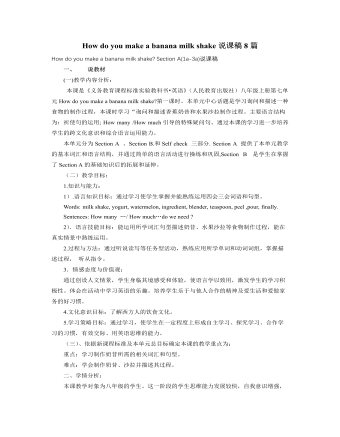
人教版新目标初中英语八年级上册How do you make a banana milk shake说课稿8篇
- 页数:25页
- |大小:123.50KB

人教版新目标初中英语八年级上册How do you get to school教案2篇
- 页数:38页
- |大小:273.00KB

人教版新目标初中英语八年级上册How often do you exercise教案2篇
- 页数:21页
- |大小:182.50KB
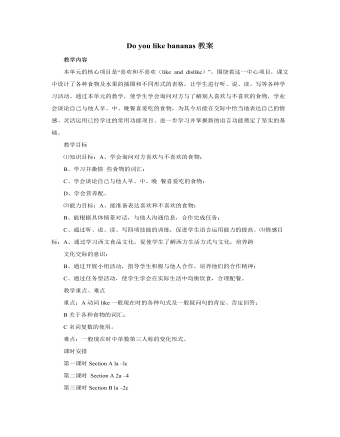
人教版新目标初中英语七年级上册Do you like bananas教案
- 页数:14页
- |大小:94.00KB

人教版新目标初中英语九年级上册How do you study for a test教案2篇
- 页数:30页
- |大小:588.00KB

人教版新目标初中英语七年级上册Do you have a soccer ball教案
- 页数:15页
- |大小:88.00KB

人教版新目标初中英语七年级上册Do you want to go to a movie教案
- 页数:14页
- |大小:82.50KB
热门课件教案
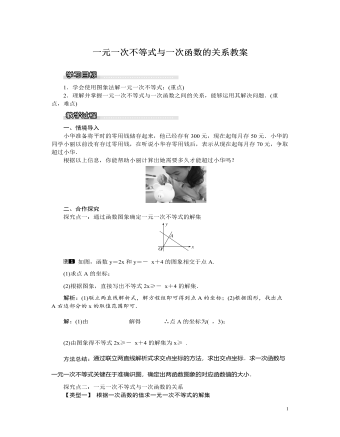
北师大初中八年级数学下册一元一次不等式与一次函数的关系教案
- 页数:2页
- |大小:1M
- 课件教案
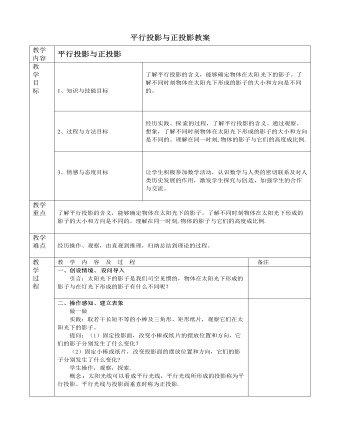
北师大初中数学九年级上册平行投影与正投影2教案
- 页数:2页
- |大小:453.50KB
- 课件教案
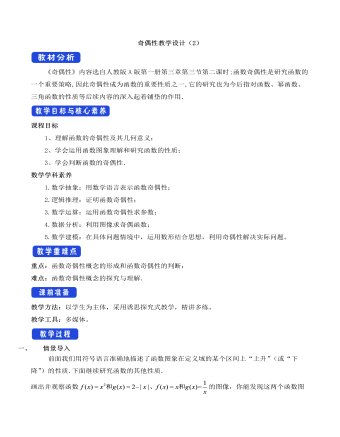
人教A版高中数学必修一奇偶性教学设计(2)
- 页数:7页
- |大小:179.77KB
- 课件教案
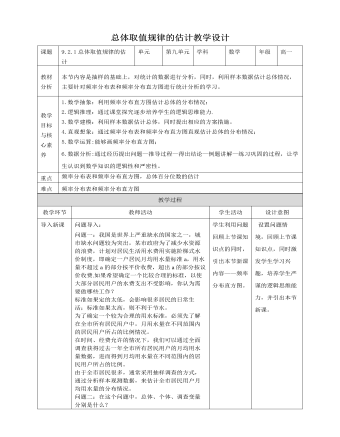
人教A版高中数学必修二总体取值规律的估计教学设计
- 页数:12页
- |大小:821.00KB
- 课件教案
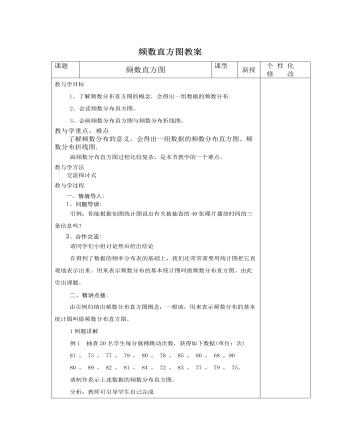
北师大初中七年级数学上册频数直方图教案2
- 页数:5页
- |大小:71.50KB
- 课件教案
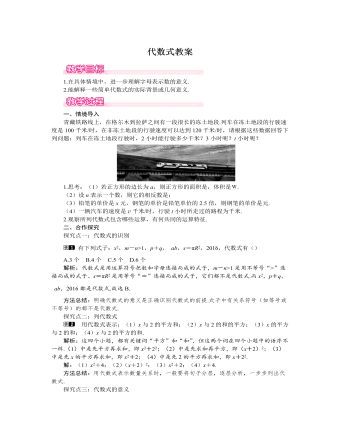
北师大初中七年级数学上册代数式教案1
- 页数:2页
- |大小:398.00KB
- 课件教案
今日更新
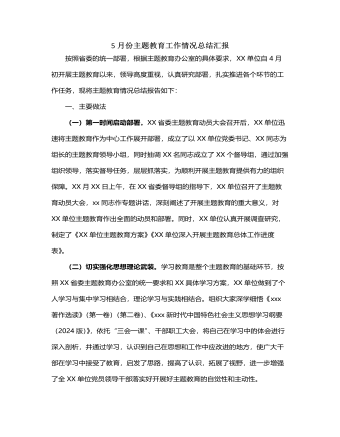
5月份主题教育工作情况总结汇报
- 页数:3页
- |大小:136.87KB

××县招商局2024年上半年工作总结
- 页数:12页
- |大小:142.54KB
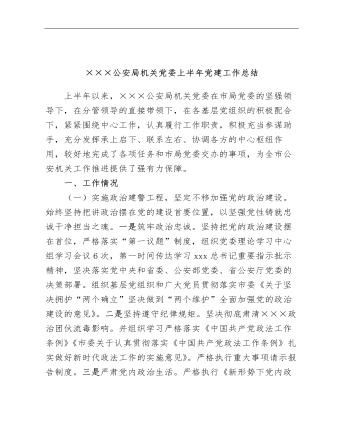
×××公安局机关党委上半年党建工作总结
- 页数:7页
- |大小:186.25KB

《2019—2024年全国党政领导班子建设规划纲要》实施情况的工作总结3800字
- 页数:6页
- |大小:29.16KB
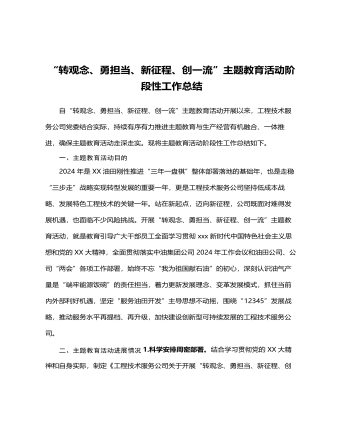
“转观念、勇担当、新征程、创一流”主题教育活动阶段性工作总结
- 页数:3页
- |大小:22.76KB

“四零”承诺服务创建工作总结
- 页数:5页
- |大小:39.83KB





